
Scientifica's top neuroscience research news from March 2020
This month's top neuroscience stories include a new technique to visualise all of the brain's blood vessels, discovery of a neuronal circuit that controls vocalisations and the launch of an open-access database of all proteins expressed in the brain.
1. New brain reading technology could help the development of brainwave-controlled devices
A new technique that enables brain activity to be accurately recorded at scale has been developed by scientists at the Francis Crick Institute, Stanford University and UCL. In mice, the technique enabled the recording of brain activity across large areas, including on the surface and in deeper regions simultaneously.
The device utilises silicon chip technology with super-slim microwires that are 15-times thinner than a human hair. Electrical signals travel from neurons, up the microwires to a silicon chip, which processes and analyses the data to show which parts of the brain are active.
The researchers hope that the technology could not only be used in neuroscience research, but could also help with neuroprosthesis developments. In this application, the technology could enable signals to be transmitted from the brain to a prosthetic limb, as well as create electrical signals in the brain when neurons aren’t firing themselves, for example in motor neurone disease.
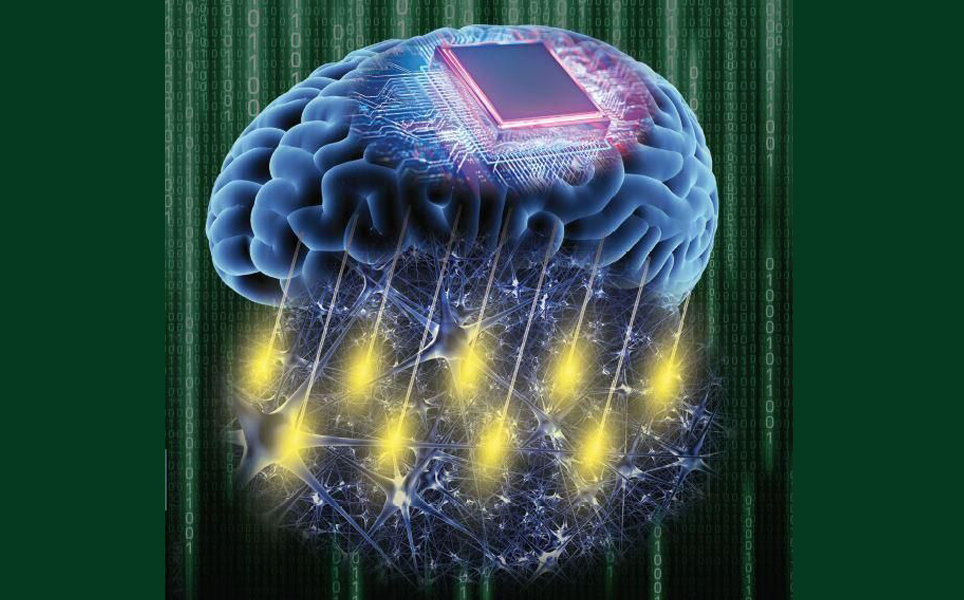
Accurate recording of brain activity
2. New technique ‘prints’ cells to create diverse biological environments
Researchers at the University of California, Berkeley, have developed a new technique that uses photolithography and programmable DNA to rapidly ‘print’ 2D arrays of cells and proteins that mimic a variety of cellular environments in the body.
This new technique could help scientists better understand the cell-to-cell messaging that determines the type of cell that a stem cell becomes. The technique could be used to recreate any tissue, from brain to liver, and investigate how cellular interactions contribute to the functioning of the tissue.
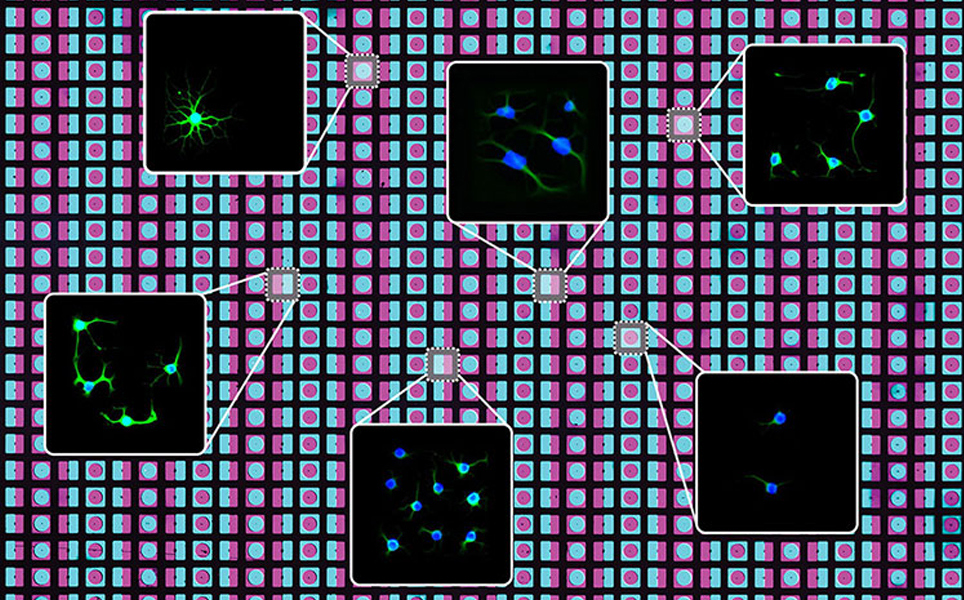
Understanding cell communication
3. One step closer to understanding the human brain
An open-access database of all proteins expressed in the brain has been launched by an international team of researchers, led by the Karolinska Institutet.
This new Brain Atlas is the latest database released by the Human Protein Atlas program. It is based on the analysis of nearly 1,900 brain samples covering 27 brain regions, combining data from the human brain with corresponding information from the brains of the pig and mouse.
The map confirms that the overall organisation of the brain is conserved among mammals, but also reveals differences between human, pig and mouse brains.
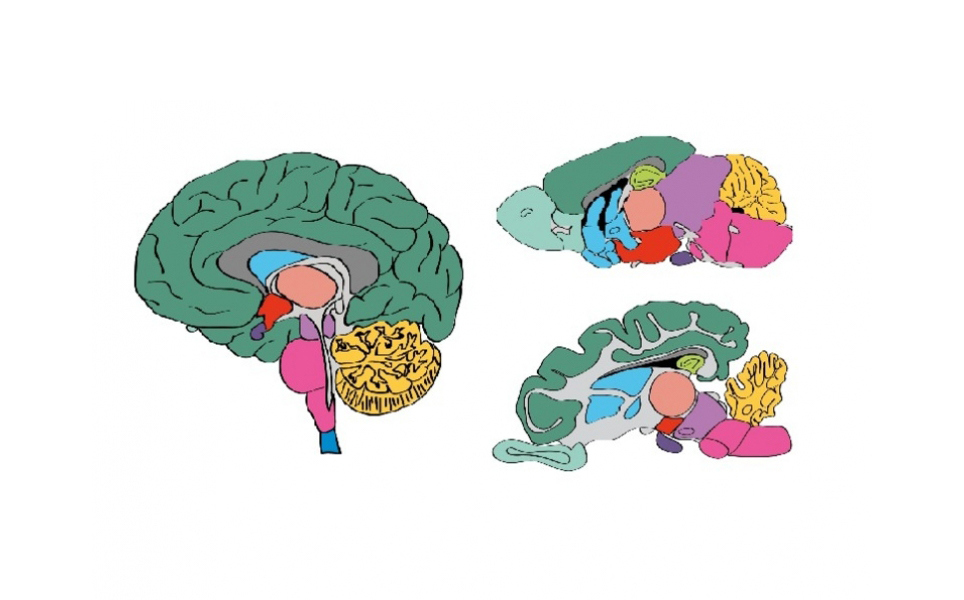
Insight into the brain
4. International study completes the largest genetic map of psychiatric disorders so far
In an international study involving researchers at the University of Barcelona, the largest genetic map of psychiatric disorders to date has been completed.
The study identified 109 genetic variants associated with eight psychiatric disorders in around 230,000 patients. The psychiatric disorders studied were anorexia nervosa, autism, ADHD, schizophrenia, bipolar disorder, depression, obsessive-compulsive disorder and Tourette Syndrome.
Learn more
5. Scientists identify new target for Parkinson’s therapies
Researchers at the University of Leeds investigated the alpha-synuclein protein, which is linked to the onset and progression of Parkinson’s disease. A short region of the protein known as NAC, which is prone to aggregation, has been long-assumed to be key to Parkinson’s disease.
Two regions outside of NAC were identified by the researchers as playing a critical role in controlling alpha-synuclein forming amyloid fibrils. When these regions were removed, aggregation was prevented in the lab.
When the NAC protein and a variant of the protein without the control regions were inserted into the muscle cells of nematode worms, alpha-synuclein was no longer able to form aggregates when the control regions were removed.
This discovery could help scientists understand how the protein sequence causes Parkinson’s disease, helping to find a new therapeutic target.
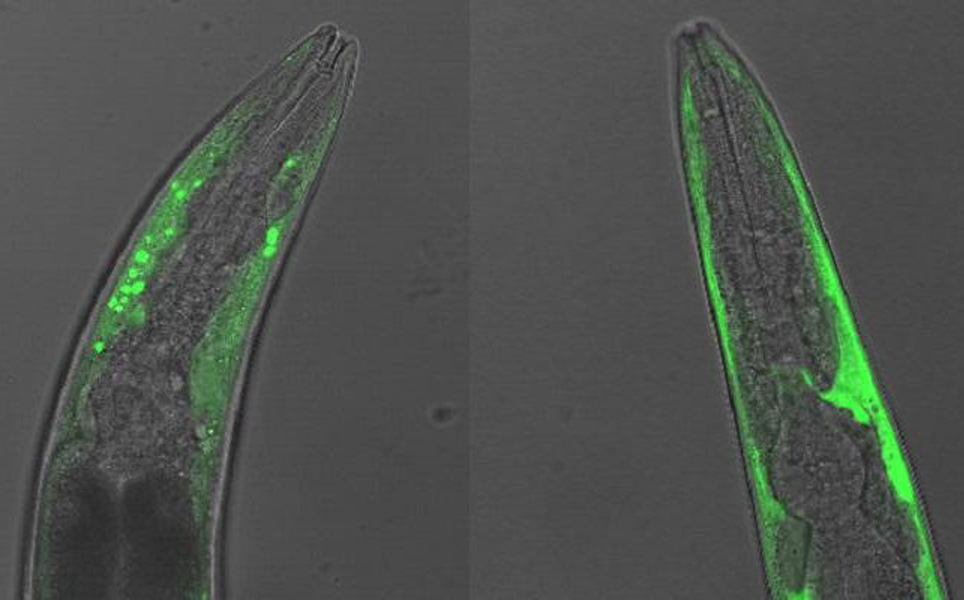
Find out more
6. Virtual reality shows promise for early detection of MS balance problems
A portable and inexpensive virtual reality-based test to enable detection of balance impairments in patients with multiple sclerosis (MS) has been developed by researchers at UNC School of Medicine.
The test uses a virtual reality system to trick subjects into thinking they are falling as they walk on a treadmill. In the study, the reactions of people with MS differed to those of the same age who didn't have MS, but there were no differences between the two groups when they walked normally without having the illusion of falling.
This test could be used clinically to earlier detect balance impairments in patients with MS, enabling them to take measures to reduce their risk of falling.

Utilising virtual reality
7. Automated analysis of whole brain vasculature
A technique based on biochemical methods and artificial intelligence, that enables all of the brain’s blood vessels to be visualised, has been developed by scientists at Helmholtz Zentrum München, LMU University Hospital Munich and the Technical University of Munich.
Being able to visualise all of the brain’s blood vessels will allow changes, which are characteristic of many brain disorders, to be seen. Scientists will be able to analyse blood vessels to better understand both normal and pathological brain function.
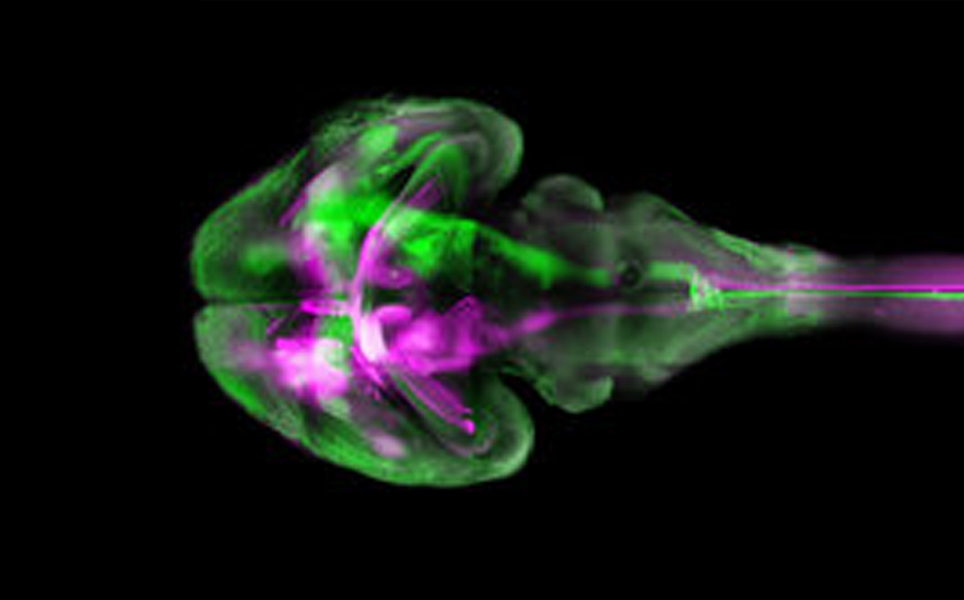
Visualising brain vasculature
8. How the brain controls the voice
A neuronal circuit that controls vocalisations has been discovered in the brains of bats by scientists at Goethe University.
The researchers were able to predict what types of sounds the bats were about to make, based on the oscillation rhythm of the circuit. The rhythms observed in the bat brain are similar to neural rhythms recorded from humans. Therefore, these findings could lead to a better understanding of human diseases where language is impaired, such as Parkinson’s or Tourette syndrome.
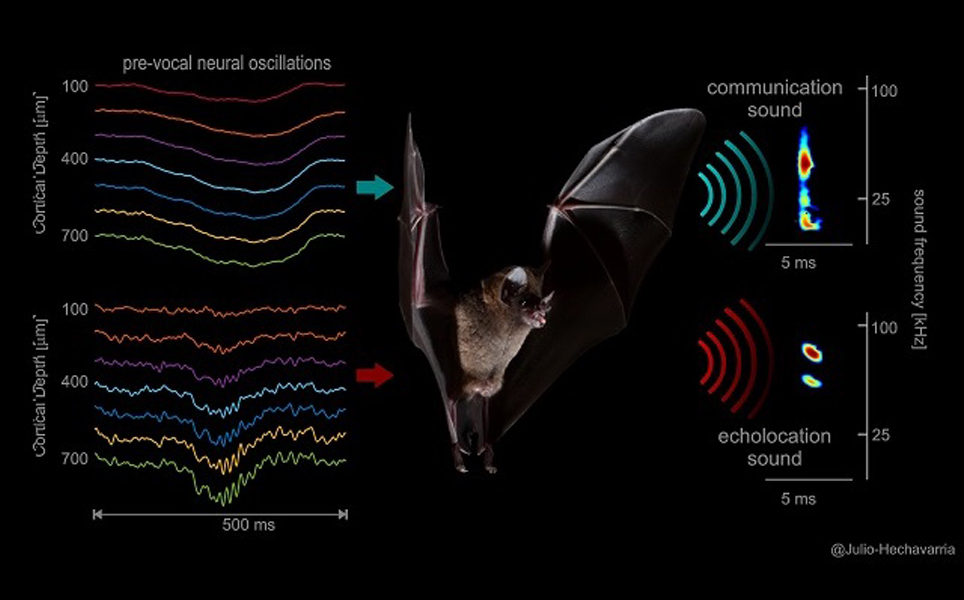
More here
9. ‘Zombie’ brain cells develop into working neurons
Researchers at the Francis Crick Institute, the University of Lausanne (UNIL) and the Max Planck Institute for Chemical Ecology have found that preventing the death of neurons during brain growth creates ‘zombie’ cells that can develop into functioning neurons.
Due to a regulatory mechanism that removes excess cells, around 50% of neurons destroy themselves via apoptosis during brain development. From experiments in fruit flies, the researchers found that preventing the death of these neurons caused them to later develop into functional networks of ‘zombie’ neurons with similar, but not identical, roles and properties to standard neurons.
From the results, it is believed that changes in patterns of cell death could enable a species to adapt to changing environments, through the evolution of new networks of neurons with unique characteristics.
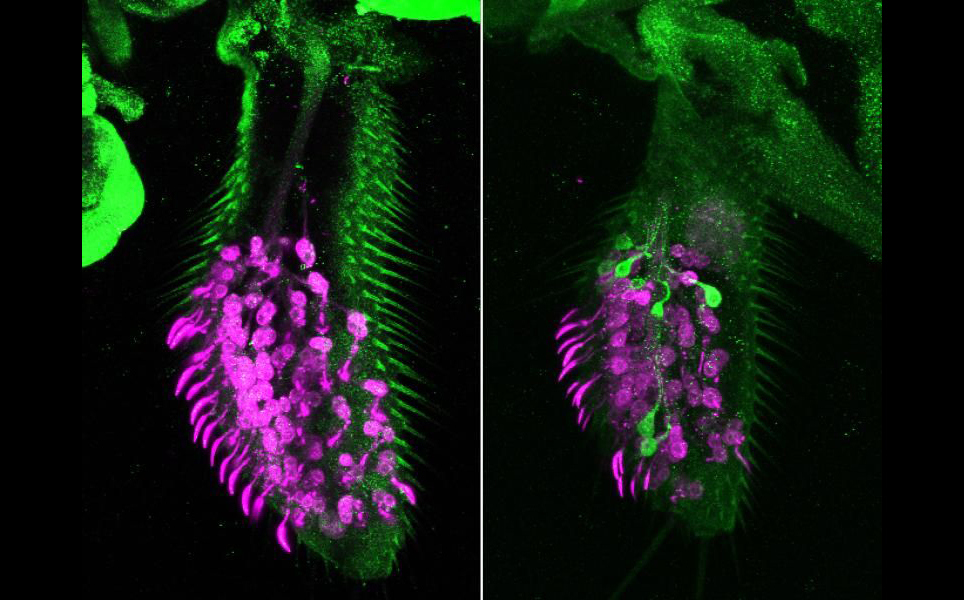
The role of zombie neurons
10. New NUI Galway study establishes how cognitive intelligence is a whole brain phenomenon
An international study led by researchers at NUI Galway used diffusion tensor imaging (DTI) to gain insight into how general cognitive ability (IQ) is determined.
It was previously thought that general intelligence was determined by specific areas of grey matter, including temporal and frontal regions of the brain. However, the researchers found that white matter, which is made up of nerve fibres, is also involved, with small variations in white matter being linked to changes in IQ. The team also found that it isn’t just parts of white matter that are important for intelligence, but the whole of this wiring system.
Intelligence involves the whole brain
Banner image credit: Steeve Cruchet, CIG-UNIL
Take a look at our previous top neuroscience stories:
Sign up to receive our latest news
Find out about Scientifica's latest product releases, company news, and developments through a range of news articles, customer interviews and product demonstration videos.

)